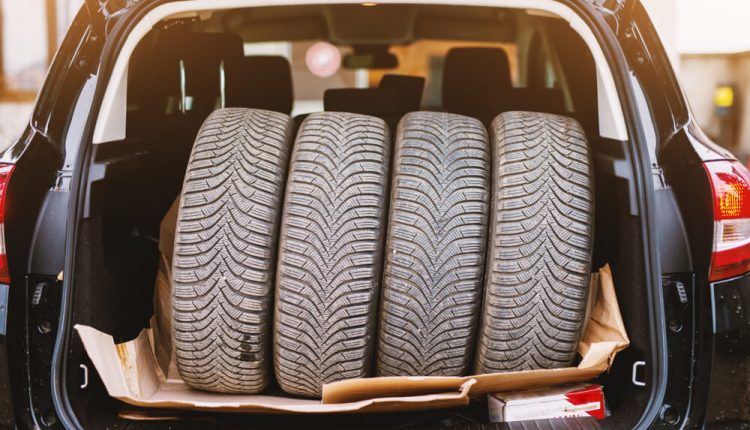If you take a look at the palm of your hand and then multiply this surface area by four, you’ll get a pretty good idea of the portion of your vehicle that keeps you on the road. In comparison with the overall size of your vehicle, this is a relatively small surface area. Which is why it is so important to make sure that your tires are always in top shape. Here are some winter tire check steps to follow in order to ensure maximum road safety.
Check your Tread
When you buy new tires, you will notice that the tread is quite thick and pronounced. As you drive, the friction created between the tires and various driving surfaces will cause normal wear. Once the tire tread reaches a certain level, your tires no longer offer the same amount of grip and this makes driving increasingly dangerous. There are several ways of measuring the tread on your tires. Firstly, you can use the tread wear indicators which are located inside the grooves of the tire. These bars are made from hard rubber and they are positioned sideways across the tread. When the tire tread is flush with these indicators (1.6mm) then the tire needs to be replaced. Another popular trick is to use a quarter. Place a Canadian quarter in one of the grooves and make sure that the caribou is facing down. If you can see the tip of its nose, this means that the tread is no longer deep enough and you need new tires. If you want to invest in a specialized tool, you can buy a tire gauge and use it to measure the tread as needed.
Important note: If your tires measure 4.88mm before the onset of winter, they will most likely not last the entire season and it is best to have them replaced sooner rather than later. Heavy snowfalls and ice are always a risk and this risk is multiplied exponentially when your tires are not in their best shape.
Tire Pressure Check
One of the main reasons for premature tire wear is due to incorrect tire inflation. It’s important to remember that the amount of tire pressure recommended during the summer is not the same as the recommended pressure during the winter. This is because the outside temperature also affects the pressure of tires as they expand and contract. Uneven wear can result from both over and under inflated tires. Over-inflation can result in less grip, while under-inflation can result in damage to the tires and even rims. Properly inflated tires experience more even distribution and offer superior fuel consumption.
Important note: Each vehicle has its own recommended PSI. In other words, different vehicles require different tire pressures. Check your owner’s manual or the label inside the driver’s door frame before checking the tire pressure. If unsure, ask a tire expert for assistance.
Tire Rotation, Alignment, and Balancing
Tires need to be rotated and balanced every 10,000km in order to prevent uneven wear from occurring. Alignment is also recommended if you feel like your car pulls to the left or right or when you notice any uneven wear. Rotating or changing your tires often requires balancing and alignment to be performed too. Your alignment can sometimes be affected if you hit a bump or pothole. When checking your alignment, make sure that the road is flat, free of traffic, and that you test at various speeds. If the road is curbed to allow for improved water drainage, this can create the impression that your car is pulling to the left or right when, in fact, it is due to the shape of the road itself. If unsure, have a professional take a look.
Check for Damage
Last but certainly not least, you should always remember to look beyond the tire tread for wear and damage. Cracked or brittle-looking tires often require immediate replacement in order to prevent the risk of a blowout. While inspecting your tire tread, take some time to inspect the tire wall too.
When you need to repair any flat tires, purchase new tires for your vehicle, or replace your rims, make sure that you don’t settle for anything less than the best! Contact our team at (647) 745-0930 or book an appointment online for expert tire assistance today.


